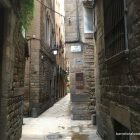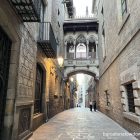Barcelona was founded by the Romans in the first century AD. As the city’s population increased, two aqueducts were built to bring water from springs in the mountains nearby. After the fall of the Roman Empire, the aqueducts fell into disrepair and were eventually abandoned.
During the tenth century AD, a channel called El Rec Comtal was dug to bring water from the River Besos, twelve kilometres northwest of the city.
At the beginning of the fourteenth century, the Concell de Cent (municipal government of the time) piped water from Montjuïc and Collserola to fountains built within the city walls.
Today, more than six hundred years later, a few of the original medieval fountains continue to supply drinking water to passers-by.
Medieval Fountains
Font de Santa Ana
El Font de Santa Ana dates back to 1356 and is the oldest fountain in Barcelona. Installed in a small square next to the Portal dels Orbs. Initially, it was just a large stone trough used to water animals. In 1375, a fountain was added to supply drinking water to the city’s human population.
The hexagonal stone structure which stands today was built in 1819. The decorative blue and white tiles and green ceramic vases were added in 1918.
Nowadays drinking water comes from two brass taps but originally it would have spouted from the carved stone faces on each side of the fountain.
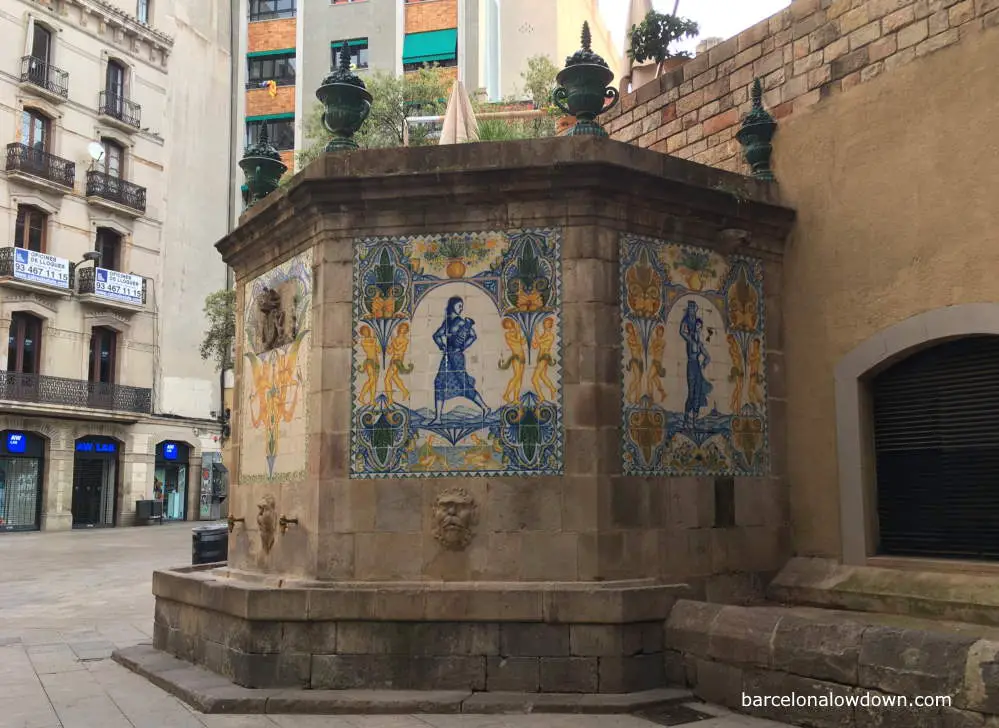
| Name | Font de Santa Ana |
|---|---|
| Architect | unknown |
| Year | 1356 |
| Location | Carrer dels Arcs, 7 |
Font de Sant Just
El Font de Sant Just was built in 1367 and is dedicated to Joan Fiveller, a wealthy merchant and member of the Concell de Cent. Legend has it that Fiveller discovered a spring while hunting in the mountains outside Barcelona and built the necessary infrastructure to bring water to the city centre.
The original gothic fountain was rebuilt in 1831 and is aesthetically quite similar to the Font del Pla de la Boqueria (see below) which was built at around the same time.
The fountain is decorated with the coats of arms of Barcelona and Catalonia, a small sculpture of Sant Just and another of a falcon, presumably a reminder of Fiveller’s love of hunting. The inner workings of the fountain are only accessible from inside the adjacent building.
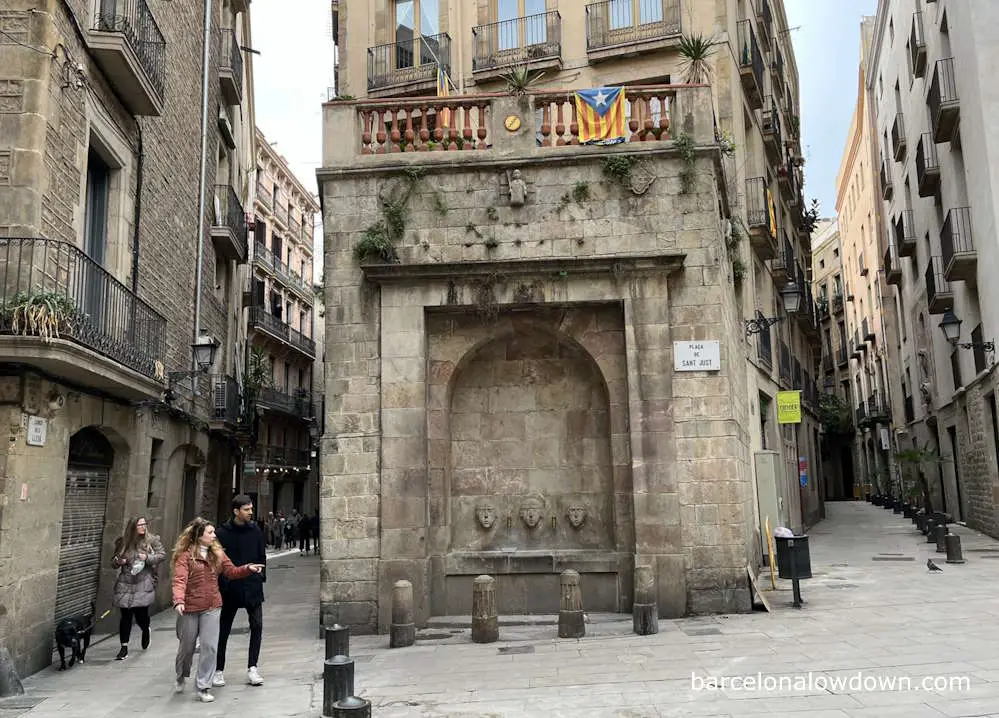
| Name | Font de Sant Just |
|---|---|
| Architect | unknown |
| Year | 1367 |
| Location | Plaça de Sant Just |
Font de Santa Maria
El Font de Santa Maria stands directly opposite the main entrance to the Basílica de Santa Maria del Mar. The fountain was built in 1403 by Arnau Bargués, who also designed the town hall and supervised the construction of Barcelona Cathedral.
Apparently, it was commonly referred to as The Fountain of the Gentlemen due to the number of rich merchants who owned palaces in the area. The simple Gothic-style fountain is adorned with the coats of arms of Barcelona and Catalonia, plus two gargoyles in the form of a dragon and a lion.
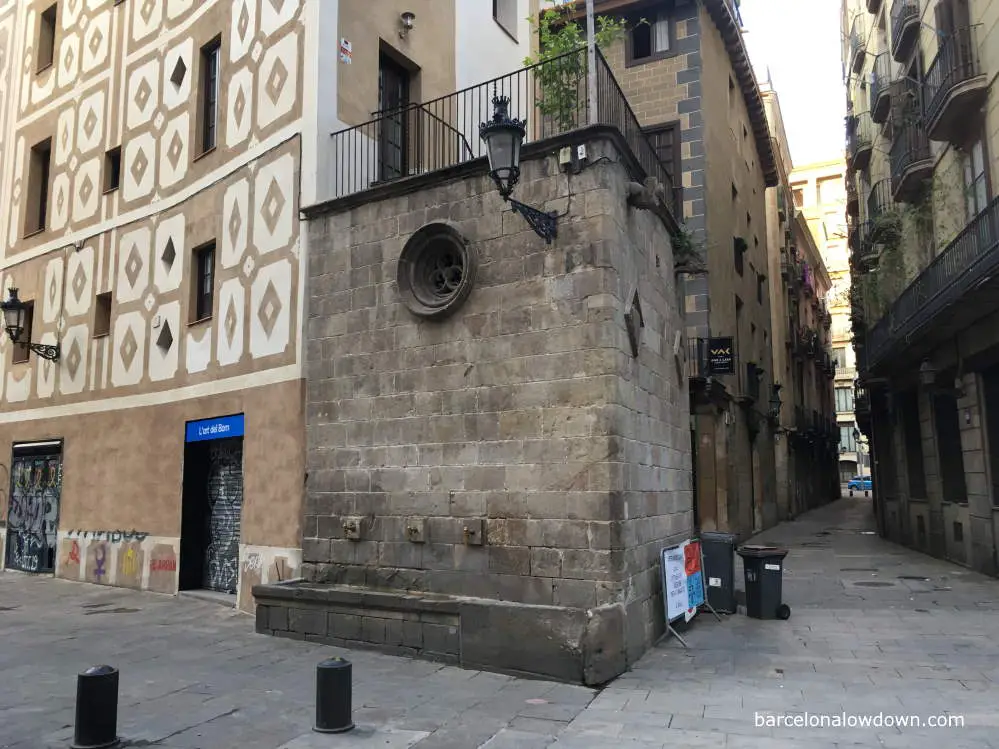
| Name | Font de Santa Maria |
|---|---|
| Architect | Arnau Bargués |
| Year | 1403 |
| Location | Plaça de Santa Maria |
Other Historic Fountains
The last two fountains on our list were built during the modern era but are very similar to the earlier fountains and were initially located beside two of the city’s medieval gateways.
Font de Portaferrissa
El Font de Portaferrisa was built in 1604 and named after the Porta Feriça gate, which stood nearby.
The fountain was initially built next to L’Església de Betlem church on the other side of what is now Las Ramblas (then a ditch). When the church was rebuilt in 1681, it was moved to its current location inside the city walls.
Two brass taps are set in a recessed arch decorated with ceramic tiles that were added in 1959. Three panels between the taps recount the history of the gate.
Porta Ferriça was one of the gates of the second wall of Barcelona, built in the 13th century.
The iron bar, one of the longitudinal measures used in the city – which was fixed on the gate it gave its name to it in addition to the street leading from the centre of the old city.
In Portaferrissa street, were built, at the beginning of the sixteenth century the Casa Gralla. A beautiful Plateresque building that disappeared when the street of the Duke of Victoria opened, and the Casa Pinós, of the Marquis of Barbara, also demolished in the mid-nineteenth century.
The construction of the Moya Palace (now Comillas) in 1774, led to the demolition of the old gate.
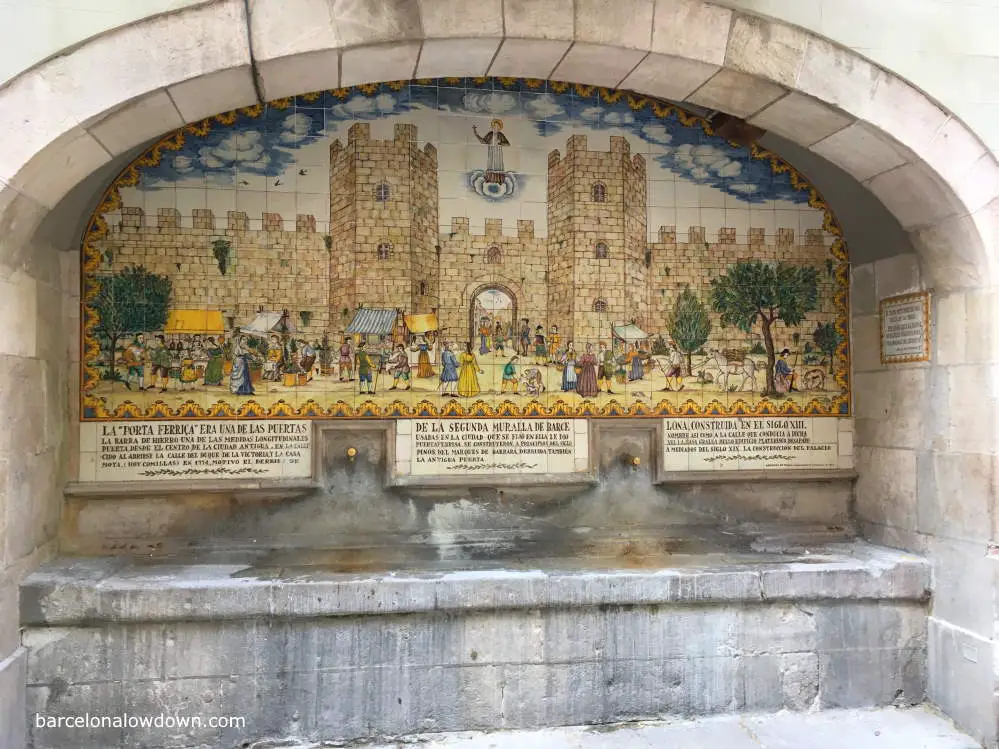
| Name | Font de Portaferrissa |
|---|---|
| Architect | unknown |
| Year | 1604 (current location 1681) |
| Location | Carrer de la Portaferrissa 2 |
Font del Pla de la Boqueria
El Pla de la Boqueria takes its name from the medieval gateway which occupied the site until 1818.
The gate was originally named after Santa Eulalia but was renamed La Boqueria after the butchers’ stalls which were set up in the adjacent streets. As the city expanded during the nineteenth century the gateway was torn down along with the fountain which stood beside it.
The current fountain was built in 1830 and was originally a freestanding rectangular stone structure, similar to the other fountains in this article. When the three-star Hotel Internacional was built in 1894, the fountain was incorporated into the building’s ground floor.
The Font del Pla de la Boqueria fountain is made of stone from Montjuïc and has two brass taps mounted between three stone masks. Above the masks, there’s a large stone carving of the coat of arms of Barcelona adorned with an Ancient Greek helmet and a lion’s skin. The helmet and skin are a reference to the Greek god Heracles who, legend has it, founded Barcelona while undertaking a voyage with Jason and the Argonauts.

| Name | Font del Pla de la Boqueria |
|---|---|
| Architect | unknown |
| Year | 1830 |
| Location | Pla de la Boqueria |
The fountains described in this article are within easy walking distance of each other; see the map below.
Map
Pla de la Boqueria, Barcelona
Font de Portaferrissa, 2, Barcelona
Plaça de Santa Maria, 08003 Barcelona, España
Plaça de Sant Just, Barcelona
Carrer dels Arcs, 7, Barcelona,


